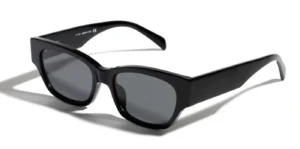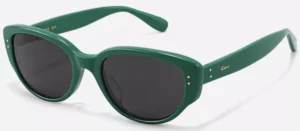Introduction
Sunglasses are one of the most ubiquitous fashion accessories found across the globe. The eyewear industry generates over $100 billion dollars annually. With demand massive and brands innumerable, one question always arises – who makes sunglasses?
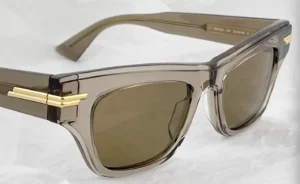
In this comprehensive guide, we are the best quality sunglasses manufacturers uncover the major players involved in sunglass manufacturing and what each one contributes to bringing shades from concept to finished product. You’ll learn about:
- Optical companies that design lenses
- Frame producers that manufacture the frames from materials
- Third-party factories contracted for assembly
- Branding dynamics between designers, licensors, and licensees
- Major vertically integrated corporations that control the optical supply chain
- Hidden manufacturers that create products for various labels
- Distribution logistics to bring sunglasses to market
- Retailers large and small that sell the eyewear to consumers
- The future of innovative direct-to-consumer brands
By the end, you’ll understand the many custom sunglasses manufacturers collaborating to create the sunglasses we all enjoy wearing. The supply chain is far more complex than one might expect. Let’s dive into the shades!
Chapter 1: Sunglass Lens Manufacturers
Sunglass lenses provide crucial protective and optical functions. Most frame brands don’t actually produce their own lenses. Instead, they source lenses from specialized wholesale optical manufacturers. Here are the major players:
The French multinational EssilorLuxottica is the world’s largest lens producer controlling over 25% global market share. It produces a wide variety of lens options from standard plastics to polycarbonates to advanced photochromic and polarized films. Essilor lenses are sold both directly to retailers and to other major eyewear companies.
Carl Zeiss
The 170-year-old German optics specialist Carl Zeiss is another leader in precision lens manufacturing. Renowned for optical expertise, Zeiss makes lenses featuring its proprietary Teflon Clear Coat technology and polarized film offerings.
Hoya Vision Care
The Japanese conglomerate Hoya is the 3rd largest optical company globally. In addition to diverse lens products, Hoya is uniquely vertically integrated – it makes both lens blanks and finished lenses. This consolidation of production allows greater quality control.
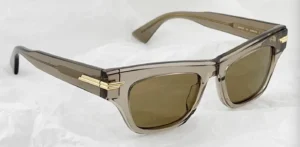
Other Lens Makers
Beyond the top three, other significant lens manufacturers globally include Seiko Optical Products, Younger Optics, OptoTech, Shanghai Conant Optics, and Satisloh. Most focus on their own proprietary technologies whether coatings, tints, or fabrication methods.
The Big Three Dominate
While smaller specialists fill niches, Essilor, Zeiss, and Hoya comprise over 60% of the optical lens market. Their scale allows the production of lenses cost-effectively. Most sunglass companies source base lens blanks from one of these giants and then add their own treatments.
Now let’s look at sunglass frame manufacturing…
Chapter 2: Sunglass Frame Producers
Sunglass frames constitute intricate components that greatly impact comfort, fit, and style. Many brands outsource frame fabrication to specialized factories with advanced molding and machining capabilities. Notable frame producers include:
Luxottica
The Italian eyewear behemoth Luxottica owns its own frame production facilities. With the largest integrated frame operations globally, Luxottica can produce over 130,000 frames per day in various plastics and metals. This allows rapidly supplying frames to Luxottica’s owned brands like Ray-Ban and Oakley.
Marchon Eyewear
This American company produces frames and distributes them to prominent third-party fashion labels like Calvin Klein, Lacoste, and Sean John. Marchon operates 15 global factories churning out millions of frames annually. It focuses intently on quality control.
Another Italian frame producer, Marcolin manufactures designer eyewear for brands like Tom Ford, Balenciaga, Moncler, and Sportmax. It specializes in intricate designs leveraging advanced prototyping technology and specialty materials.
Other Producers
China has also emerged as a major frame producer supplying brands seeking affordable manufacturing. Notable Chinese factories include Wenzhou Mingshi Optical, Creative Optics, and Ying Sheng Eyewear. These operations offer huge economies of scale.
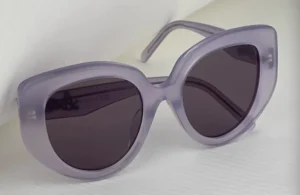
In-House Production
Some large eyewear brands like Oakley run their own proprietary factories to control frame design, production costs, and quality control completely in-house. However, this vertical integration is expensive and thus less common. Most brands distribute production rather than fund their own facilities.
Now let’s explore how sunglasses get assembled…
Chapter 3: Sunglass Assembly Factories
Once lenses and frames get fabricated separately, they finally come together at independent assembly facilities completing finished sunglasses ready for sale. Major assembly factories include:
Charmant Group
With 25 factories worldwide, the Japanese-owned Charmant Group specializes in assembling luxury eyewear brands like Chanel, Porsche Design, and Louis Vuitton. Meticulous engineering allows assembling frames with custom hardware to high tolerances.
TECAPRO
This Taiwanese company focuses on assembling affordable products for large retailers. It leverages lean manufacturing principles to maximize output. TECAPRO can produce over 1.5 million units monthly.
Sigma Corp
Headquartered in France, Sigma assembles mid-market and luxury eyewear brands like Lancôme and Ted Baker. Sigma invests heavily in automated assembly systems and RFID tracking to increase quality assurance during production.
Multiple Specialists
China, Taiwan, and South Korea also have large assembly factories for mass-market brands seeking low-cost labor. These operations balance artisan hand assembly with automation. Location near component suppliers minimizes shipping costs.
Chapter 4: Distribution and Branding Dynamics
Sunglass branding falls into three primary structures impacting how products reach customers:
Luxury Houses
Major fashion labels like Prada and Versace control their brands completely. They design products in-house and then contract manufacturing to producers and assemblers. This allows maximum creative ownership. However huge investments in advertising are required to build brand recognition.
Licensed Brands
Many labels lend their trademarks to eyewear specialists to produce and market sunglasses under license. Ralph Lauren, for example, licenses its Polo brand to Luxottica. This provides the optics company design freedom while benefiting from the fashion brand’s existing publicity. Licensors receive royalty payments in exchange for marketing support.
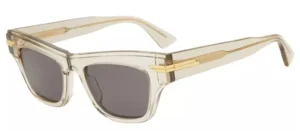
Private Label Brands
Retailers can also contract manufacturing companies to produce sunglasses branded with store private labels. For instance, Pacific Sunwear contracts out sunglasses under its PacSun brand. This allows retailers to offer exclusive differentiated products.
In reality, distribution involves complex multi-level licensing deals. Luxottica both makes its own brands and licenses others. Ultimately, strong marketing matters most for commercial success.
Now let’s look at the major corporations driving integration…
Chapter 5: Big Eyewear Conglomerates
Amidst all the fragmentation, a handful of massive players dominate through aggressive vertical and horizontal acquisitions, controlling the optical supply chain. The powerhouses include:
Luxottica
This Italian megalith owns everything from frame production to retail outlets. Luxottica’s brand portfolio includes Ray-Ban, Oakley, Persol, Arnette, and REVO. It also holds licenses for Chanel, Prada, Versace and more. Distribution muscle allows Luxottica to place its frames in nearly every global retailer. Critics argue such consolidated power limits consumer pricing options.
EssilorLuxottica
A 2018 merger created this behemoth combining the world’s largest lens maker Essilor with industry titan Luxottica. The merger aims at leveraging combined lens and frame competencies covering all aspects of design, manufacturing, and distribution. With over 140,000 employees worldwide, the new giant possesses unprecedented vertical integration.
Marcolin Eyewear
While smaller than Luxottica, Marcolin is aggressively acquiring brands and licenses as well. It currently produces eyewear for Tom Ford, Guess, and Adidas. Marcolin is aiming higher by purchasing operating rights to brands like Cover Girl. Competing with Luxottica remains an uphill battle, however.
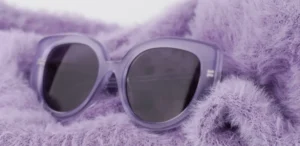
This Italian producer has controlling stakes in fashion eyewear brands like Kate Spade, Hugo Boss, and Tommy Hilfiger. Safilo invested nearly $100 million in a Padua production facility to bring more manufacturing in-house. Maintaining momentum requires deep advertising budgets, however.
Marchon Eyewear
Marchon’s foothold in licensing prominent brands like Calvin Klein, Lacoste, and Chloe allows it to compete strongly despite lacking the vertical integration of Luxottica. Marchon leverages flexible Asian supply chains to manufacture frames competitively. Time will tell whether this horizontal focus proves sustainable.
While these giants slug it out by acquiring assets, smaller niche companies keep thriving through specialization and close customer relationships. Manufacturing is not wholly monolithic.
Now let’s survey the retail landscape…
Chapter 6: Sunglass Retailers
Connecting sunglass brands with customers represents a crucial final step. Products get sold through diverse retail channels:
Optical Retail Chains
Multi-location brick-and-mortar optical chains like LensCrafters, Sunglass Hut, and Visionworks sell branded eyewear en masse. Their purchasing power secures competitive wholesale pricing from companies like Luxottica. Consumers can conveniently try on options. However, markups can be substantial.
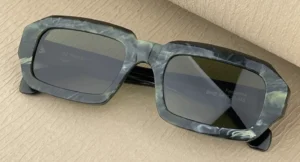
Independent Optical Boutiques
Smaller regional or local opticals offer personalized service focused on specific client needs from sports performance to prescription customization. Without corporate overhead, pricing may be more reasonable. But selection is narrower.
Big Box Stores
Mass retailers like Walmart and Target dedicate floor space to sunglasses. Volume discounts result in low prices, though mainly brands you won’t find elsewhere. Trying frames on is welcomed. Quality varies.
Fashion Boutiques
Apparel and accessories boutiques carry sunglass lines that complement their clothing aesthetics and target demographics. Brand diversity creates uniqueness. Pricing aligns with store positioning. Sales associates provide styling guidance.
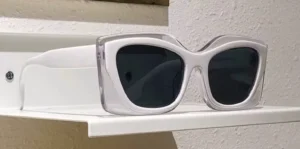
Sports Retailers
Stores catering to athletics like Decathlon stock performance sunglasses for running, fishing, golf, and more. Brands align with intended sporting use. Trying on shades during simulated activity is beneficial.
Online Retailers
E-commerce opens up global accessibility to brands and discounts. Virtual try-on apps help replicate in-store experiences digitally. Returns are easy. But you can’t physically compare options side by side. Be mindful of potential counterfeit replicas online.
Diversity in retail sustains consumer choice. Though a few big players like Luxottica do occupy most channels through brand dominance.
Let’s now glimpse the future of eyewear…
Chapter 7: Direct-to-Consumer Brands Rising
Recent years have seen a surge of smaller startups selling sunglasses online directly to consumers. Leveraging social media and influencer marketing, disruptive brands like Prive Revaux, Blenders Eyewear, and Quay Australia bypass conventional retailers. This allows slashing prices drastically by controlling production, sales, and marketing in-house. The appeal of quality shades at a $50-60 price point shared on Instagram has great appeal to younger demographics. While still a niche, DTC brands present a democratizing force. If they scale up through outside financing, these agile startups could disrupt establishment titans.

Conclusion
And there you have it – a comprehensive overview of everyone collaborating to bring sunglasses from concept to completion! From lens makers and frame producers to third-party assemblers and mega brands, it takes an interconnected web working in sync to satiate global demand. No single entity controls all aspects of the supply chain. Consolidation does threaten competition and pricing power. But disruptive upstarts can still break through the system. The next time you put on a pair of shades appreciate the immense coordination required to make them a reality!
